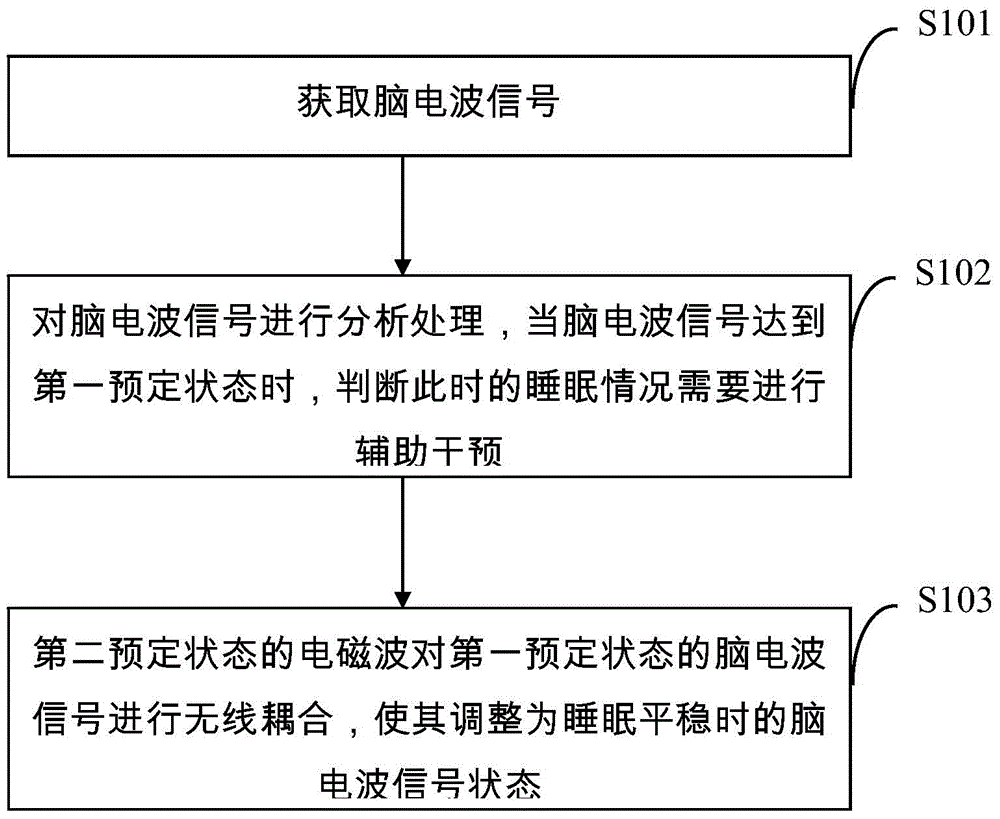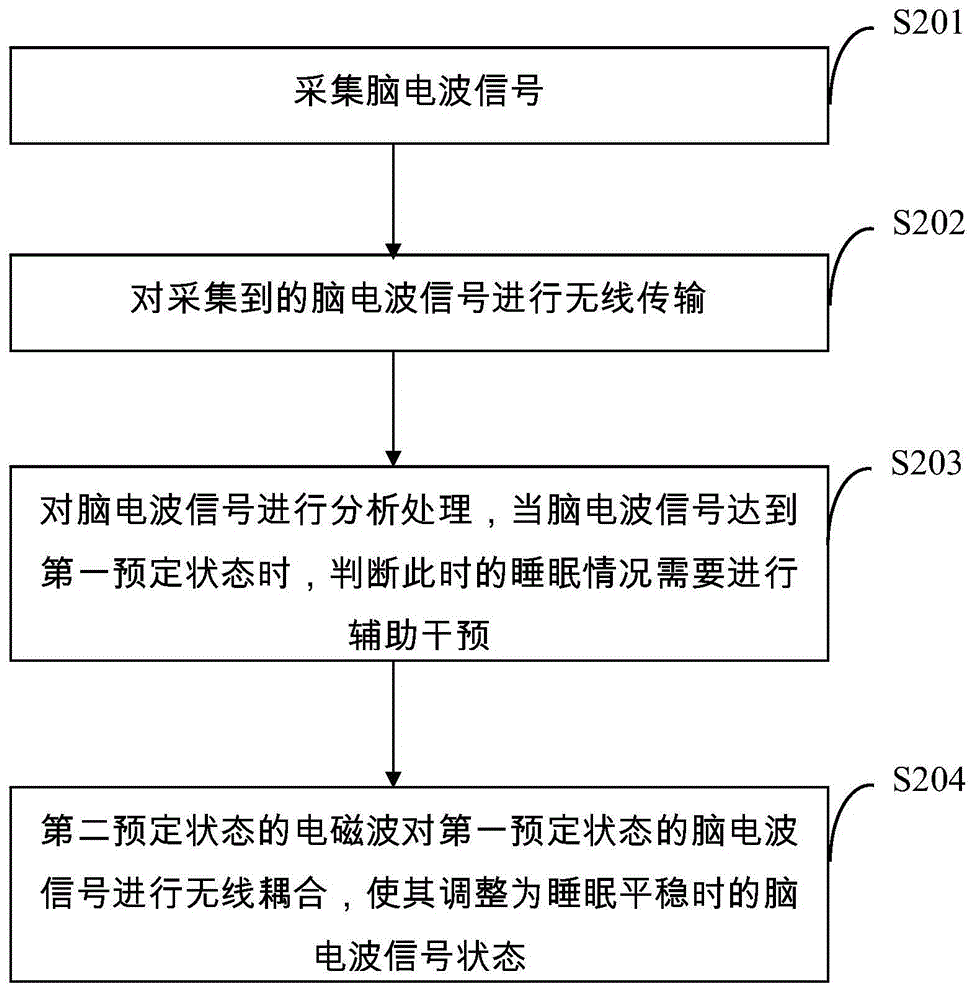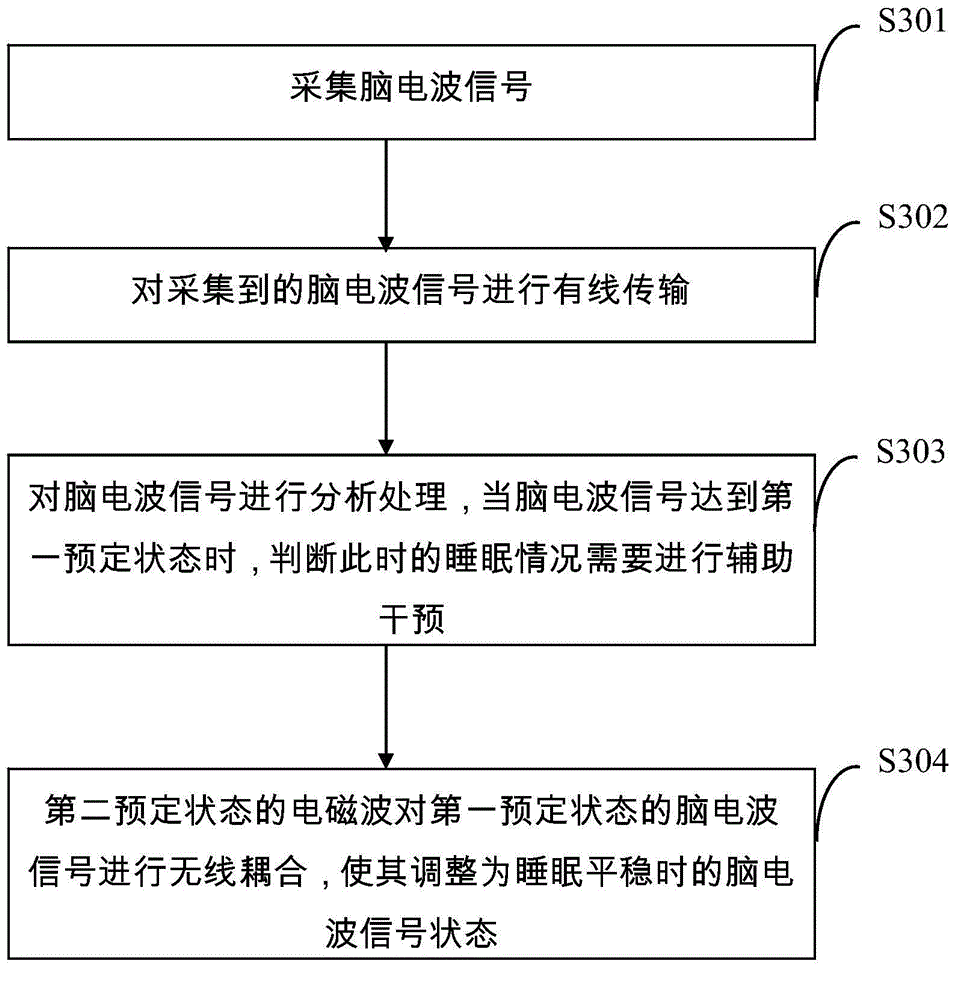Method and system with sleeping aid function and cellphone integrated with system
A sleep aid and functional technology, applied in the field of sleep aid, can solve problems such as non-universality, unfavorable sleep, and brain wave acquisition obstacles, and achieve good effects, good treatment methods, and clear adjustment goals
- Summary
- Abstract
- Description
- Claims
- Application Information
AI Technical Summary
Problems solved by technology
Method used
Image
Examples
Embodiment 1
[0072] refer to figure 2 , methods with assisted sleep function include:
[0073] Step S201: collecting brain wave signals;
[0074] Step S202: Wirelessly transmit the collected brainwave signals.
[0075] Step S201 and step S202 are refinements to step S101 in the foregoing embodiment, and the acquisition of brain wave signals is divided into two steps: acquisition and wireless transmission. In step S201, collecting brainwave signals can be realized by directly interposing electrodes on the brain, or by wearing a headband or hat with electrodes on the head. In step S202, wireless transmission methods include local area network, WIFI, infrared, bluetooth, etc. In practical applications, the wireless transmission method can be selected according to factors such as integrity and fidelity of signal transmission.
[0076] The content described in steps S203-S204 is the same as the content described in steps S102-S103.
Embodiment 2
[0078] refer to image 3 , methods with assisted sleep function include:
[0079] Step S301: collecting brainwave signals;
[0080] Step S302: Perform wired transmission of the collected brainwave signals.
[0081] In step S302, the waveguide transmission or the coaxial wire transmission can be used, and a corresponding transmission line interface needs to be set on the instrument for collecting brain wave signals.
[0082] The content described in steps S303-S304 is the same as the content described in steps S102-S103.
Embodiment 3
[0084] refer to Figure 4 , methods with assisted sleep function include:
[0085] Step S401: collecting brainwave signals;
[0086] Step S402: Wirelessly transmit the collected brainwave signals;
[0087] Step S403: amplifying the brain wave signal;
[0088] Because the brain wave signal is very weak, generally only about 50 μV, and the amplitude range is 5 to 100, so the brain wave signal needs to be amplified before it can be analyzed and processed. The amplification gain of the brain wave signal is much higher than that of the general signal, and generally needs to be amplified by about 20,000 times.
[0089] Step S404: performing A / D conversion on the brain wave signal;
[0090] The collected brain wave signals are generally analog signals, which need to be converted into digital signals by A / D and then amplified.
[0091] Step S405: performing noise filtering on the brainwave signal;
[0092] Since the frequency of the brain wave signal is low, generally in the ran...
PUM
 Login to View More
Login to View More Abstract
Description
Claims
Application Information
 Login to View More
Login to View More - R&D
- Intellectual Property
- Life Sciences
- Materials
- Tech Scout
- Unparalleled Data Quality
- Higher Quality Content
- 60% Fewer Hallucinations
Browse by: Latest US Patents, China's latest patents, Technical Efficacy Thesaurus, Application Domain, Technology Topic, Popular Technical Reports.
© 2025 PatSnap. All rights reserved.Legal|Privacy policy|Modern Slavery Act Transparency Statement|Sitemap|About US| Contact US: help@patsnap.com



